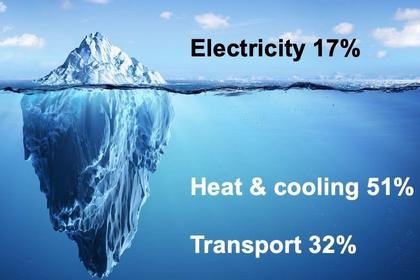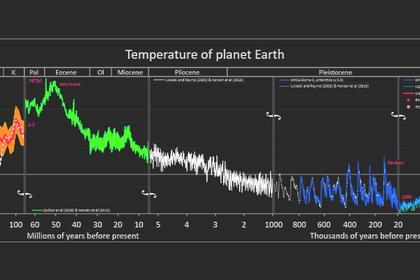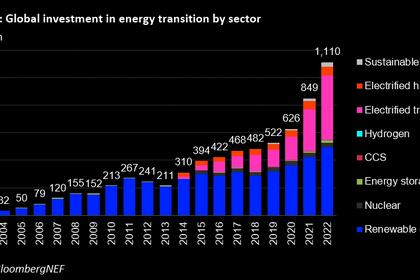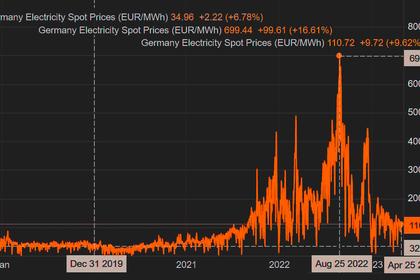
GLOBAL WARMING & WILDFIRES IN CANADA
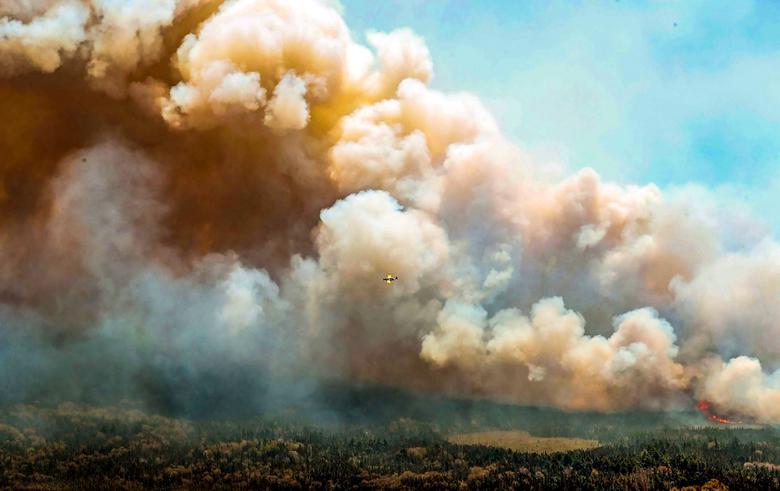
ENERGY MIX - June 4, 2023 - An “unprecedented” early start to Canada’s wildfire season had Emergency Preparedness Minister Bill Blair declaring 2.7 million hectares of forest destroyed, with crews combatting blazes from Atlantic Canada to British Columbia and Nova Scotia battling the flames in three subdivisions built with insufficient water to fight fires.
With 211 fires burning last Thursday morning, 82 out of them out of control, and tens of thousands of people forced out of their homes, “these conditions this early in the season are unprecedented,” Blair told media. But “due to climate change, similar extreme weather events may continue to increase in both frequency and severity across our country,” he added.
Blair had already pledged support for provinces and territories facing “extremely challenging” conditions. “We will do everything we can to support the people of Canada as they are being impacted by this extremely challenging wildfire season,” he told media last Monday. “It is frankly an all-hands-on-deck response to the challenges that people are facing.”
But the federal government is already concerned there won’t be enough people or equipment to fight the fires, and is looking ahead to the risk of firefighter burnout, with staff working “days on end in extremely harsh conditions”, the Globe and Mail reports.
The Canadian Interagency Forest Fire Centre was working to commission firefighters from other provinces and countries to converge on the various hotspots. But for those who were travelling between provinces, “the fire situation is troublesome almost everywhere now, and those provinces need their staff back at home,” the Globe says.
Demand for firefighting personnel and equipment from other jurisdictions “is extreme,” the interagency centre reported, but the “national availability of resources is limited.”
On Friday, a U.S. scientist echoed Blair’s language linking the wildfire emergency to global heating. “Climate change has been implicated in worsening wildfires across North America,” Kristina Dahl, principal climate scientist with the Union of Concerned Scientists’ climate and energy program, told CTV News. “We also know there are a lot more people living in wildfire-prone areas. And so that means there are more people to potentially spark fires and more people affected when the fires do occur.”
“Across the world and by almost any metric that we look at, wildfires are growing worse,” she added. “They are burning larger areas, they’re burning more severely, they’re burning over a longer fire season in mountainous regions, they’re burning at higher elevations where it’s typically cooler, as well.”
Ground Zero in Nova Scotia
Nova Scotia has been ground zero for some of the worst impacts, with more than 16,000 people evacuated and the largest fire in the province’s history making international news and triggering air quality warnings in the United States. The province has already seen 195 wildfires, compared to 153 all last year, and they’ve been more intense. A province-wide fire ban is in effect until June 25 or until conditions improve.
On Saturday afternoon, Premier Tim Houston said only five fires were still burning, only one was out of control, and CBC said a mandatory evacuation order for parts of Bedford, at the northwestern end of Bedford Basin, had been rescinded.
The last out-of-control blaze was in Shelburne County on Nova Scotia’s southeastern tip, where rainfall was allowing crews to “get on the fire line with a higher degree of safety” and confront a wildfire that had been raging out of control for a week, Department of Natural Resources spokesperson Dave Rockwood said Saturday.
“I will caution that this rain does not yet mean we are out of the woods, but we are now able to have our ground crews kick it into high gear and get into these places we have not been able to set foot on in days to kick some ash,” he told CBC in an email.
Earlier in the week, Rockwood said the fire, which started near Barrington Lake and has now consumed some 230 square kilometres, was “rolling like a freight train” with 300-foot flames. By Wednesday, half of Shelburne’s population, or 6,700 people, had been evacuated, and the county was warning of “dangerous air quality issues,” CBC reported.
About 25 kilometres outside Halifax, the fire s in suburban Upper Tantallon, Hammonds Plains, and Pockwock were declared 85% contained on Saturday, The Canadian Press reports, as “heavy rain and some military reinforcements arrived to assist efforts” to quell the blaze. But not before it reached a span of 788 hectares, destroyed 200 homes, and left “visible scars” on the community, CBC adds.
Halifax Examiner says the area of the Tantallon fire could remain a fire scene for weeks or months.
“The randomness of it—going through a neighbourhood you could see one property was lost and a house next door was fine,” Halifax Chief Administrative Officer Cathie O’Toole told media earlier in the week. “The entire community is going to need some support through this to try and recover.”
Subdivisions Without Hydrants
But traumatic as those losses were for humans and wildlife alike, they weren’t unexpected. Two years ago, Halifax Fire told the Halifax Auditor General the three soon-to-be-evacuated subdivisions had been built without adequate access to water, Examiner revealed last week.
“Halifax Fire management told us certain subdivisions were built without appropriate fire safety specifications, such as inadequate water sources to fight fires,” wrote Auditor General Evangeline Colman-Sadd. “Specific subdivisions of concern include: Indigo Shores Subdivision in Middle Sackville, Westwood Hills Subdivision in Upper Tantallon, and White Hills Subdivision in Hammond Plains.”
Two years later, Examiner said the Regional Municipality of Halifax had “outlined the problem and a solution to it,” but it wasn’t clear whether new hydrants had been installed in the three subdivisions.
Halifax Examiner’s running account of the Nova Scotia fires contained 24 stories as of June 4.
Elsewhere, about 1,500 people in the Innu village of Maliotenam, about 650 kilometres northeast of Quebec City, were ordered to leave their homes due to nearby fires, APTN reports. Across Quebec, the number of forest fires grew from 117 to 139 between Thursday and Friday, and the province has seen a total of 387 blazes so far this year, compared to a 10-year average of 197. A quarter of a million households lost electricity last Thursday afternoon as a result.
A 2,400-hectare fire burning out of control forced 500 people from the northern Quebec town of Chapais to evacuate to Chibougamau, about 40 kilometres away. A fire attributed to an all-terrain vehicle burned about 75 hectares near St. Andrews, New Brunswick, and highway access to the northern Ontario communities of Hornepayne and White River was closed earlier last week due to “extremely dangerous conditions”.
Havoc for Indigenous Communities
Fires were wreaking havoc in First Nations and Métis communities in Alberta as far back as mid-May, with thousands of homes and businesses lost, nearly 17,000 evacuated, and 26 of 87 fires burning out of control. By then, the Alberta government was seeking federal wildfire aid after cutting funds for an early response team that could have stopped many of the blazes before they had a chance to grow and spread. Meanwhile, unfounded rumours and conspiracy theories around the wildfires were spreading as fast as the flames in both Alberta and British Columbia.
“Elections and natural disasters are unfortunately two of the types of events that tend to unleash the most amount of false and misleading content and claims,” ProPublica journalist Craig Silverman told CBC.
“Take Facebook and throw that damn thing in the garbage,” a frustrated Wade Williams, mayor of Yellowhead County, advised last month.
Late last week, nearly 1,000 people in Fort Chipewyan were forced to leave ahead of an 8,600-hectare fire, in an evacuation by boat and plane made more complicated by the community’s remote location. Chief Billy-Joe Tuccaro of the Mikisew Cree First Nation said anyone caught stealing from abandoned homes or businesses would be banished, but the RCMP said reports of looting in the area were unconfirmed. An evacuation order for the tiny Northwest Territories community of Sambaa K’e was lifted after a nearby wildfire consumed 50,000 hectares.
Forecasters in B.C. saw scant hope of relief from wind and dry heat fuelling fires across the province, as the Donnie Creek fire in the Peace River Regional District grew to 1,684 hectares. Researchers were looking into the long-term effects of wildfire smoke, and an interview with Citizens’ Climate International staffer Cathy Orlando was one of the featured moments in a Cross-Country Checkup segment on the long-term trauma confronting evacuees from natural disasters.
-----
Earlier:
